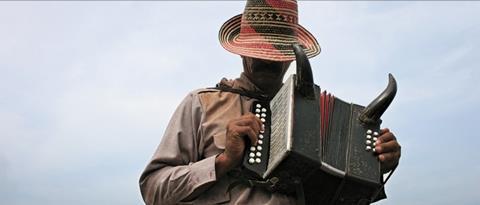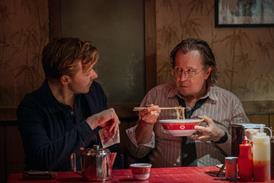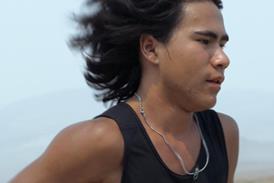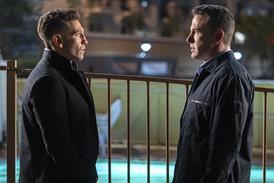Dir/scr. Ciro Guerra. Colombia-Germany-Holland-Argentina. 2009. 120mins.

The Wind Journeys follows up Ciro Guerra’s well-received 2004 debut, The Wandering Shadows, with another odd-couple tale that is far more epic in scope. Both travelogue (it was shot in 80 locations in northern Colombia) and affecting master-disciple drama, The Wind Journeys has a polished ethno-musical appeal that amply makes up for its occasional road-movie longueurs.
The landscapes and characters are so rooted in archetypes and distant from world events that we don’t really grasp the film’s period setting until we see a music festival banner identifying the year
With its stunning widescreen landscapes, colourful musical interludes and sure human touch, The Wind Journeys occupies a niche not too far from nature-and landscape dominated world cinema releases such as Himalaya or Tulpan.
We first see dour, taciturn accordionist or juglar Ignacio (Martinez) on his donkey, leaving town after the death of his wife. He’s trailed by a stubborn teenager, Fermin (Nunez), who is determined to become his apprentice, and may just possibly be his son. Ignacio wants nothing to do with him, but Fermin hangs on in there, Sancho Panza style, as the two journey across some of the spectacular unspoiled landscapes of Colombia’s Caribbean provinces, from the high sierras to the lagoons.
Ignacio is heading for the distant village of Taroa to give his accordion back to his own maestro – who won it, legend would have it, in a duel with the devil.
The long drawn-out quest arc is leavened by some more conventional dramatic conflicts. First comes Ignacio’s inistence that he doesn’t play any more – an abstinence which is finally broken in the film’s first and most spectacular musical set-piece, a competitive accordion duel in the town of Becerril.
But it’s the master-pupil standoff that is the film’s main dramatic motor, and it’s nicely underplayed, with Fermin proving his worth to Ignacio in a voodoo drumming scene, then getting himself beaten up in order to get his master’s accordion back. Though a layer of folk magic, legends and curses underpins the story, there are no supernatural shortcuts: on the several occasions when we half-expect Fermin to suddenly reveal his hidden powers, he doesn’t – but he wins our and his master’s respect nevertheless through sheer determination.
The landscapes and characters are so rooted in archetypes and distant from world events that we don’t really grasp the film’s period setting until we see a music festival banner identifying the year as 1968. There’s a rich symbolic, at times dreamlike quality to the various stages of the quest – the voodoo drummers, a machete fight on a bridge, an Arhuaca indian village in the mountains where the injured Ignacio is nursed back to health. Paulo Perez’ ravishing photography stresses the dominance of nature over man, pulling back in a series of longshots to show our heroes as specks in the landscape.
Production companies
Ciudad Lunar Producciones
Razor Film
Volya Films
Cine Ojo
Primer Plano Film Group
International sales
Elle Driver
(33) 1 56 43 67 33
Producers
Diana Bustamante
Cristina Gallego
Cinematography
Paulo Perez
Production design
Angelica Perea
Editor
Ivan Wild
Music
Ivan Ocampo
Main cast
Marciano Martinez
Yull Nunez
Agustin Nieves
Erminia Martinez
Jose Torres





















